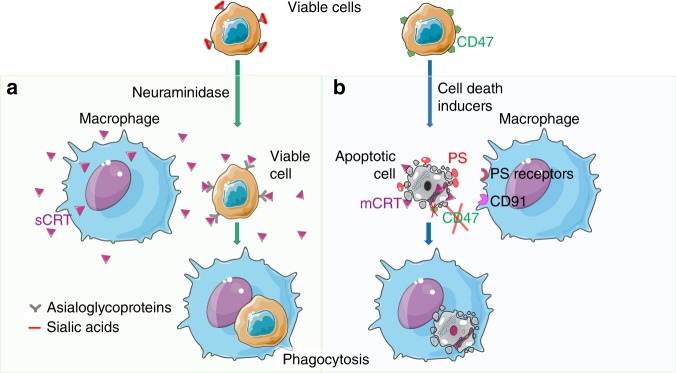Fig. 1.
Mechanisms of recognition of viable (a) and apoptotic (b) cells. a A soluble calreticulin (sCRT) secreted by activated macrophages is capable of binding to asialoglycans on viable target cells, depending on their developmental or damage state, which in turn, marks them for uptake. Neuraminidase-4 is one enzyme that could be involved in the generation of cell surface asialoglycans that bind sCRT. The cell-surface mCRT on the target cells can now interact with CD91, which is also known as low-density lipoprotein receptor-related protein 1 (LRP1). b CRT and CD91 have also been linked to immunogenic apoptotic cell death. On the surface of apoptotic cells expose phosphatidylserine (PS) and mCRT that function as “eat me” signals. The mCRT expression is particularly linked to cell death induced by agents that are known to induce immunogenic forms of apoptotic cell death. The expression of “don’t eat me” signals (e.g., CD47) on the apoptotic cells is either reduced or its location modified. Many membrane-bound receptors for PS have been reported, including those that bind PS directly or indirectly via bridging molecules. mCRT can bind CD91 on the phagocyte. The authors thank Servier for the figures that were produced using Servier Medical Art (www.servier.com)

